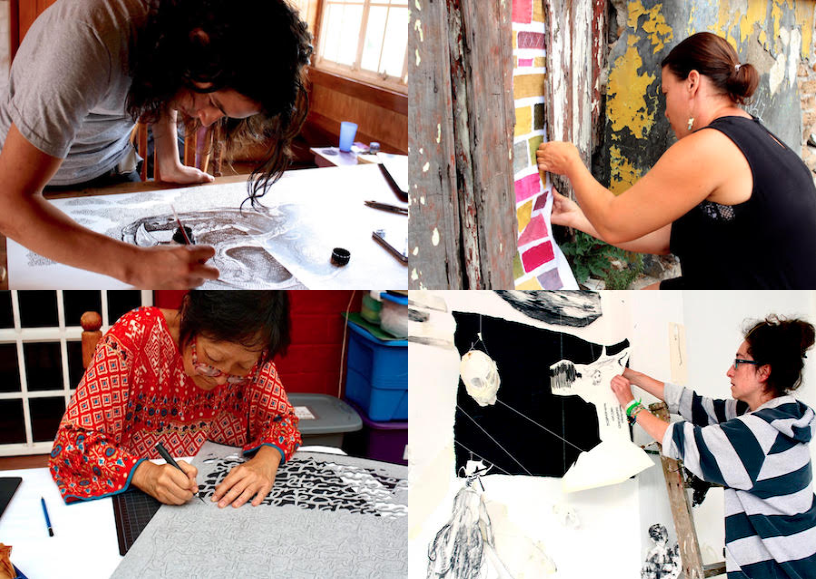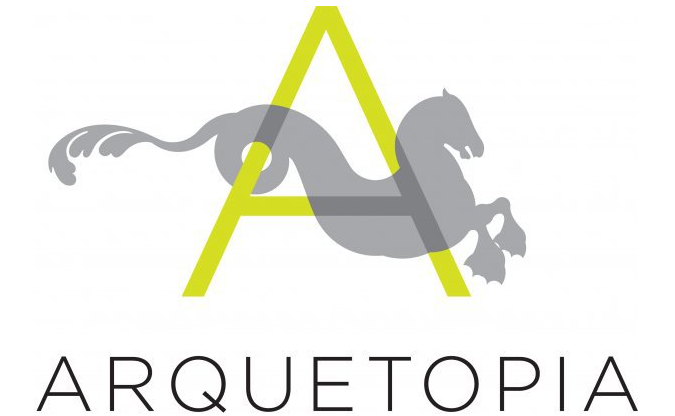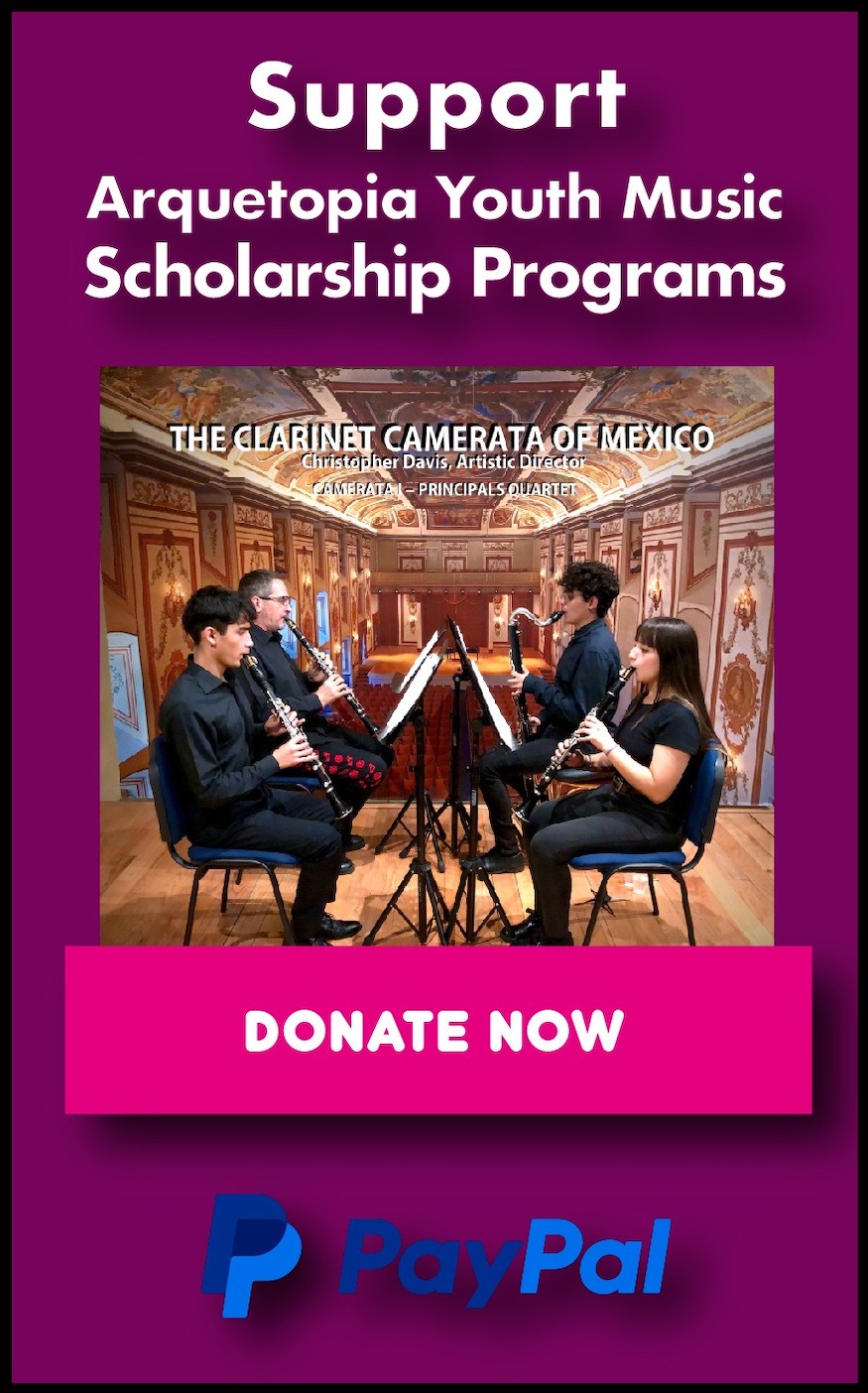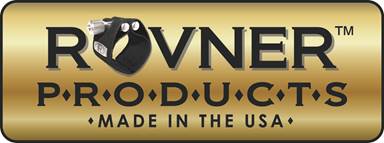The Rhythm of the Art Practice:
Guided Art, Design or Photography Program
Arquetopia Locations: Puebla, Mexico / Oaxaca, Mexico / Cusco, Peru
 This comprehensive, customized, and mentored residency program offers competitive professional opportunities for emerging and mid-career national and international artists, designers, and photographers aged 20 and over.
This comprehensive, customized, and mentored residency program offers competitive professional opportunities for emerging and mid-career national and international artists, designers, and photographers aged 20 and over.The Guided Art, Design, or Photography Program is a non-instructional program. In addition to individualized mentoring from our directorial and curatorial staff, who provide personalized research assistance, resources, project guidance, and critique, participants in this program work independently within our spaces.
The Guided Art, Design, or Photography Program invites artists to embark on an exciting and transformative journey that blends creativity, critical thinking, and cultural exploration. With a focus on challenging dominant narratives and engaging with diverse perspectives, the program encourages participants to immerse themselves in an innovative methodology that is rooted in an anticolonial framework. Drawing from the insights of Nicholas Mirzoeff’s White Sight, the program encourages artists to critically examine how colonial power structures shape visual culture, representation, and knowledge. By engaging directly with local and non-dominant perspectives, artists are invited to challenge the conventional systems of visibility and hierarchy, reclaiming the power to define their own stories, identities, and artistic expressions. Through this process, Arquetopia offers a unique opportunity for artists to move beyond passive observation and actively contribute to reshaping the way art is created, seen, and understood.
A central element of the program is the notion of rhythm emphasizin the dynamic and relational aspects of culture and history. In this context, rhythm is not simply a measure of time or motion, but a way of creating and engaging that resonates with the artist’s body, mind, and environment. The program allows participants to explore the rhythms inherent in their own creative processes while connecting them to the broader cultural rhythms of the local communities. This fluid approach encourages participants to engage in a continuous exchange between intuition, research, and material experimentation, making the act of creation an ongoing process of discovery. Through hands-on work with materials, techniques, and cultural histories, artists find themselves moving between the tactile and the conceptual, uncovering new ways to interact with the world around them. The rhythm of creation becomes a path of personal and artistic growth, grounded in both tradition and innovation.
The methodology at Arquetopia also embraces Jacques Rancière’s concept of the emancipated spectator, offering artists the opportunity to step beyond traditional roles and become active agents in their own artistic journeys. In this space, participants are encouraged to question accepted boundaries, not only in terms of physical mobility but also in terms of the ideological movements that shape artistic practice. The program challenges artists to rethink the power dynamics of the art world, questioning who controls what is seen, what is valued, and how knowledge is transmitted. Francisco Guevara, a visual artist and scholar, has developed this methodology to create a space where artists can critically reflect on their roles within global systems of art and culture. Guevara emphasizes a distinction between intention and intuition, placing greater value on intuition as the driving force behind artistic practice. By prioritizing intuition over intention, Guevara encourages artists to embrace a more organic, fluid approach to creation—one that allows for discovery, personal insight, and connection to material and culture. The program invites artists to move beyond passive learning, encouraging them to take ownership of their creative practice and intellectual exploration. Through this exciting, interactive process, artists engage with new ideas, materials, and histories, ultimately forging a deeper connection to their art, the world, and the transformative potential of creative expression.
1. The Connectivity of Concepts
The Guided Art, Design, or Photography Program invites participants to engage with a multifaceted approach, where historical, cultural, and artistic contexts are deeply intertwined. Through a process of self-reflection and mentorship, participants explore how their creative practices are influenced by broader social, political, and historical forces. The program emphasizes the importance of linking hands-on artistic production with conceptual inquiry, allowing participants to reflect on their work through dialogue and critique with mentors. This approach encourages participants to consider how their practice interacts with ongoing cultural conversations, fostering a deeper understanding of the significance of their work within a global context. By questioning dominant narratives, participants are empowered to reframe their art in ways that challenge traditional perspectives and open space for new, transformative dialogues.
2. The Practice of Unlearning
This program invites participants to critically examine the legacies of colonialism embedded in traditional artistic practices, materials, and methods. Through guided mentoring, participants explore how colonial histories have shaped contemporary notions of craftsmanship, technique, and authorship. This process of unlearning challenges participants to rethink established artistic paradigms, encouraging them to confront dominant cultural narratives and reconsider their own creative processes. By engaging with historical and indigenous knowledge, participants are invited to reclaim and transform their practices, approaching their work with a renewed, more conscious awareness that revitalizes traditional methodologies through contemporary lenses. This dynamic reflection on the past enables a deeper connection to both personal and collective histories, fostering an evolving artistic practice that resists colonial structures and opens pathways for decolonized creative expression.
3. The Rhythm of Creating
In the Guided Art, Design, or Photography Program, rhythm becomes an active space for participants to explore the intersection of technique, materials, and the broader cultural and historical contexts that shape their work. Through hands-on experimentation with various mediums, participants engage in a fluid process where intuition, materiality, and personal exploration come together. This approach encourages a continuous dialogue between making, reflecting, and discovering, transforming the artistic process into a space for critical inquiry. Intuition, rather than rigid intention, guides participants to reassess historical narratives and deepen their understanding of materials, while forging new connections between past traditions and contemporary creative expression. In this dynamic environment, participants learn to navigate the complex rhythms of art-making, developing a practice that bridges history with the present, rooted in both personal insight and collective memory.
4. The Ethics of Movement
In the Guided Art, Design, or Photography Program, participants are encouraged to embrace the methodology of "intuition" over "intention," a key concept developed by visual artist and scholar Francisco Guevara. While intention often involves a preconceived goal or outcome, intuition allows for a more organic, open-ended approach, guiding participants to engage with their materials and processes in a way that is responsive and exploratory. This shift from intention to intuition empowers participants to move beyond rigid concepts, creating a space for discovery, fluidity, and personal insight. By prioritizing intuition, participants can challenge fixed ideas, allowing their artistic practice to evolve naturally through trial, experimentation, and reflection. This process fosters a deeper connection to both the materials they work with and the histories they engage, creating room for new interpretations and innovative expressions to emerge organically.
The Guided Art, Design, or Photography Program offers a diverse range of techniques and mediums for participants to explore and develop their artistic practice, depending on their chosen focus. In the visual arts, participants can engage with drawing, painting, sculpture, and soft sculpture, as well as more experimental forms like performance and ephemeral art using materials such as food or other perishable substances. Design and graphic design are also key components of the program, allowing artists to experiment with illustration and digital media. For those focused on photography, the program provides opportunities to explore digital photography, alternative photographic processes, and other related techniques. This structure allows participants to push boundaries and refine their skills within their specific discipline.
Artists-in-Residence Cristóbal Sarro (Mexico) and Mackenzie Bullard (USA)
 2X Artist-in-Residence and Arquetopia Synergy Award Recipient, Ellen Bepp (USA); Artist-in-Residence Sarah Grothus (Netherlands)
2X Artist-in-Residence and Arquetopia Synergy Award Recipient, Ellen Bepp (USA); Artist-in-Residence Sarah Grothus (Netherlands) Drawing • Painting • Graphic design • Sculpture • Soft sculpture (cloth) • Wood carving • Performance • Ephemeral (including food and other perishable materials) • Photography: digital photography and alternative photographic processes • Digital media • Design and illustration
Residency oil painting studio at Arquetopia Puebla with sliding-glass doors for ventilation and spectacular city views

PROGRAM DURATION / TIME PERIOD
Flexible sessions of 3 to 5 weeks in Puebla, Oaxaca, or Cusco. Dates are not predetermined but are proposed by the applying artist.
WHAT THIS COMPREHENSIVE MENTORED, NON-INSTRUCTIONAL PROGRAM INCLUDES
WHAT THIS COMPREHENSIVE MENTORED, NON-INSTRUCTIONAL PROGRAM INCLUDES
Staff Support:
- A weekly meeting with our directorial and curatorial staff for personalized mentoring, research assistance, project guidance, and critique
- Furnished, private bedroom
- 24-hour access to the kitchen for participants to prepare their own meals; meals/food are the participant’s responsibility
- Wireless Internet
- Use of Arquetopia’s common spaces including outdoor terraces
- Shared, serviced (single) bathrooms with modern fixtures and showers
- Housekeeping
- 24-hour access to large and bright, shared art studio with generous natural light
- Personal workspace with a large table and wall space
- Separate 4th-floor studio with bright natural light and sliding ventilation doors provided for oil painting
- Darkroom provided for photographers; some supplies provided
- Participants bring their own materials and supplies or obtain them locally
Accommodation and Local Transportation (Oaxaca):
- Furnished, private bedroom
- 24-hour access to the kitchen for participants to prepare their own meals; meals/food are the participant’s responsibility
- Wireless Internet
- Use of Arquetopia’s common spaces
- Shared, serviced (single) bathrooms with modern fixtures and showers
- Housekeeping
- Downtown arrival pickup and departure dropoff transportation provided
- Affordable, everyday public transportation is available from the program vicinity into the city. Participants receive an orientation regarding the local transportation system upon arrival
- 24-hour access to shared studio with natural light
- Personal workspace with a large table
- Participants bring their own materials and supplies or obtain them locally
Accommodation and Airport Transportation (Cusco):
- Furnished, private bedroom
- 24-hour access to the kitchen for participants to prepare their own meals; meals/food are the participant’s responsibility
- Wireless Internet
- Use of Arquetopia’s common spaces
- Shared, serviced (single) bathrooms with modern fixtures and showers
- Housekeeping
- Arrival pickup and departure dropoff transportation provided at Cusco Airport
- Affordable, everyday public transportation is also available from the program vicinity of Urubamba and to the city of Cusco. Participants receive an orientation regarding the local transportation system upon arrival
Studio Workspace (Cusco):
- 24-hour access to shared studio with natural light
- Personal workspace with a large table
- Participants bring their own materials and supplies or obtain them locally
PROGRAM TUITION INFO & APPLICATION DEADLINES
E-mail This email address is being protected from spambots. You need JavaScript enabled to view it. for tuition info and application deadlines for this program.
TO APPLY
TO APPLY
Click here to apply for this mentored, non-instructional program.









